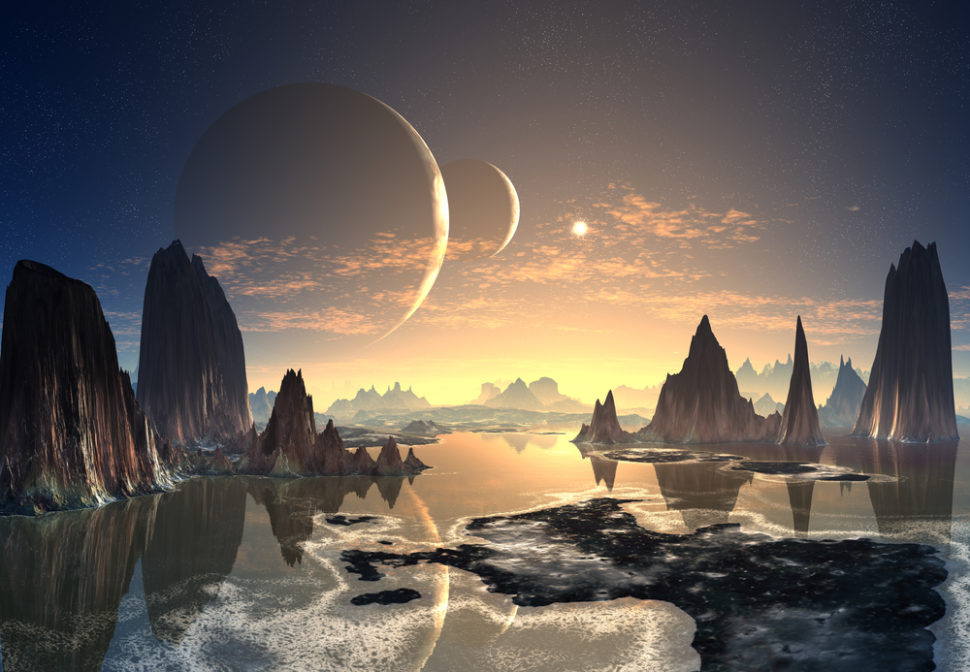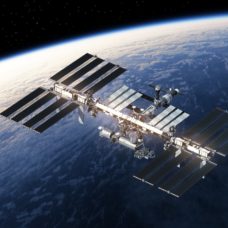The alien life that scientists are after doesn’t have to be intelligent in the form of sentient humanoids, although that’s quite tantalizing. It may look more like microbial life, or more complex lifeforms like plants, that either still exists or have existed.
In any case, from microbes up to little green guys, extraterrestrial life has to have what’s called biosignature that can be observed and measured.
To give it a definition, a biosignature can be a substance, like atmospheric gases, metabolic signs, organic compounds, and patterns whose origin is highly likely to be of biological processes.
Biosignature Science
While Earth is unique in so many respects, Earth-like worlds in the universe are anything but rare as we learned thanks to exoplanet-hunting telescopes.
Astronomers estimate there could be as many as 40 billion Earth-size planets orbiting Sun-like stars, and that’s in the Milky Way galaxy alone.
These exoplanets orbit their home star within the “habitable zone.” Habitability of a planet doesn’t necessarily mean it hosts life, but it could also mean it’s warm enough for liquid water to flow on the surface.
Unless we come face to face with E.T., finding a present or past life in outer space will likely pass through biosignatures.
Biosignature science is an emerging field that’s been evolving over the last two decades and is now taking an increasingly important role in the search for alien life.
Any potential biosignature has to pass three main criteria. First is detectability, or how likely the biosignal can accumulate to detectable levels. Two is reliability or the likelihood of the biosignature being the byproduct of life. Three is survivability, which is the biosignature’s ability to persist in its environment.
The short answer is no. We haven’t found any biosignatures that are detectable, reliable, and survivable. However, there’s a bit longer answer to that covers some of biosignature science history.
Following E.T. “Biosignature” Breadcrumbs
The 14-year Galileo mission, consisting of an orbiter and an atmospheric probe, studied Jupiter and its moons. Among the many fundamental scientific discoveries that the Galileo mission made was finding indicators of life in the Jovian atmosphere wasn’t one of them.
But en route to Jupiter in December 1990, the Galileo spacecraft made a fly-by of Earth, searching for gases in the atmosphere. The probe detected evidence of atmospheric oxygen and methane gases that, together, is a strong biosignature of life on our planet.
The Galileo Earth observations provided like a test experiment for the biosignature-based search for life on other planets.
Before Galileo, in 1976, NASA’s first lander on Mars, the Viking 1, started looking for biosignatures as soon as it touched down. The Viking 1 and the Viking 2 landers carried out different biological experiments looking for biosignatures of microbial life on the Martian soil.
Some scientists criticized the Viking mission for not having targeted the Red Planet’s atmosphere instead of the soil. In theory, biosignatures can be found in the atmosphere as well as on the surface of rocky planets. And it’s life on the surface that produces the signature in the air.
Some researchers are basing their approach on Earth, using it as a template in the search for biosignatures left by vegetation on other worlds. They’re after the Vegetation Red Edge, a spectral biosignature which they think could be detectable from space if there’s enough photosynthetic activity.
NASA’s Curiosity detected high levels of methane under the Martian surface. But there’s still no conclusive evidence that it originated from a biological source.
With a launch date still to be announced, NASA is preparing a lander mission toward Jupiter’s icy moon Europa, a potential life-supporting Galilean moon.
The primary mission of the Europa lander is to search for biosignatures that could potentially lie underneath the moon’s frozen surface. Below the thick layer of Europa ice, there’s a global ocean of salty liquid water, and if there’s any life, its biosignatures will reach the surface.
Last, an international team of astrobiologists and geologists proposed to look for biosignatures in exoplanets by studying the impact eject, the material ejected off the surface due to an asteroid impact.
Biosignature-based search for alien life isn’t the only approach. What if life on a planet isn’t organic at all or the biological sign aren’t detectable, survivable, or reliable? Well, then there’s something called technosignature, to which we’ll devote another post.



















How To Find Your Lost Cryptocurrency.
My name is George Lucas. I want to testify about GEO COORDINATES HACKER. They helped me recover my stolen crypto worth $370,000 through their hacking skills. I tried it. I was skeptical but it worked and I got my money back, I’m so glad I came across them early because I thought I was never going to get my money back from those fake online investments. I want to recommend this great hacker to anyone that truly needs an urgent solution. You can also contact them via
Email; geovcoordinateshacker@proton.me
Email; geovcoordinateshacker@gmail.com Telegram ( @Geocoordinateshacker )Website; https://geovcoordinateshac.wixsite.com/geo-coordinates-hack